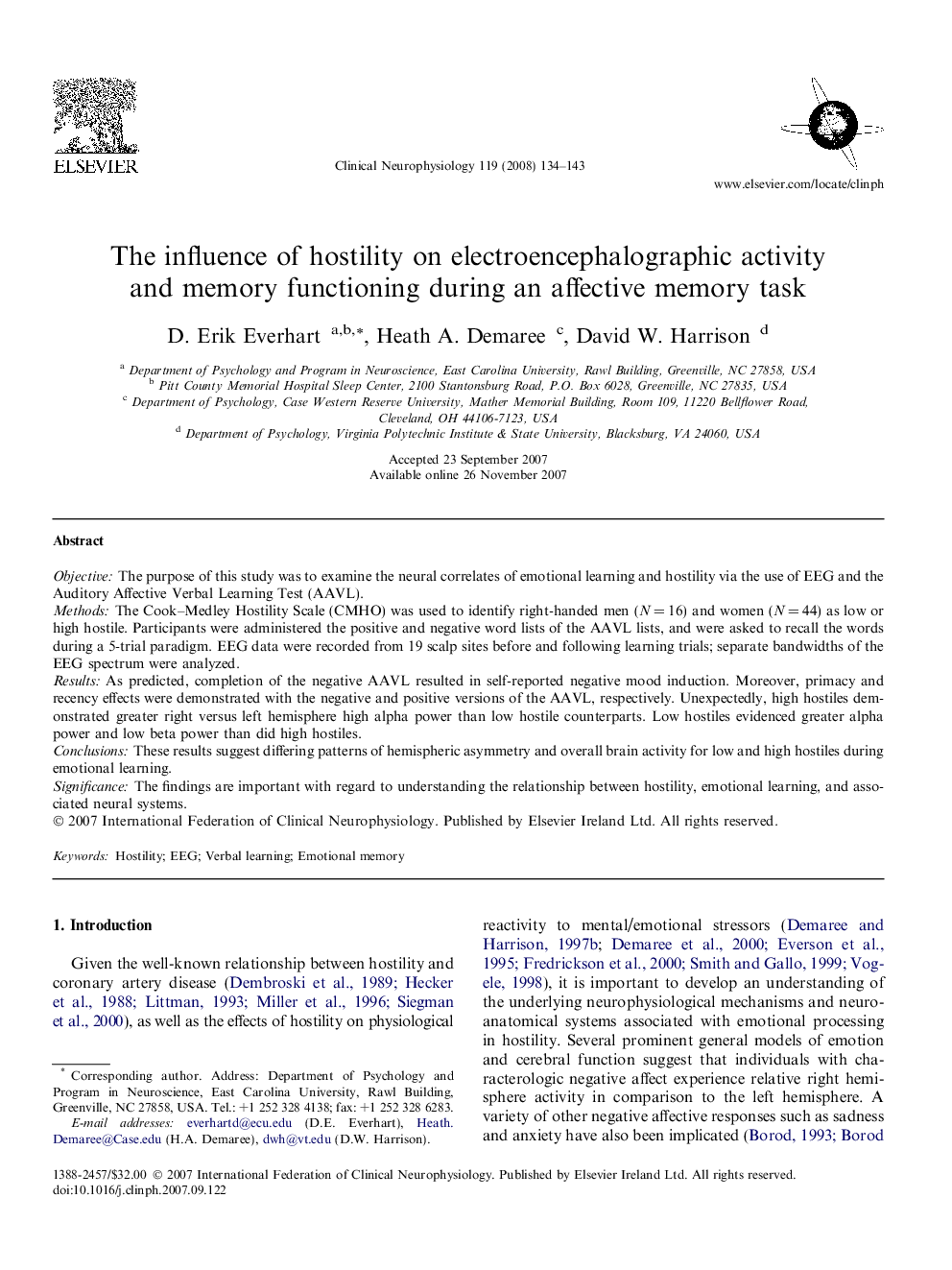| Article ID | Journal | Published Year | Pages | File Type |
|---|---|---|---|---|
| 3047048 | Clinical Neurophysiology | 2008 | 10 Pages |
ObjectiveThe purpose of this study was to examine the neural correlates of emotional learning and hostility via the use of EEG and the Auditory Affective Verbal Learning Test (AAVL).MethodsThe Cook–Medley Hostility Scale (CMHO) was used to identify right-handed men (N = 16) and women (N = 44) as low or high hostile. Participants were administered the positive and negative word lists of the AAVL lists, and were asked to recall the words during a 5-trial paradigm. EEG data were recorded from 19 scalp sites before and following learning trials; separate bandwidths of the EEG spectrum were analyzed.ResultsAs predicted, completion of the negative AAVL resulted in self-reported negative mood induction. Moreover, primacy and recency effects were demonstrated with the negative and positive versions of the AAVL, respectively. Unexpectedly, high hostiles demonstrated greater right versus left hemisphere high alpha power than low hostile counterparts. Low hostiles evidenced greater alpha power and low beta power than did high hostiles.ConclusionsThese results suggest differing patterns of hemispheric asymmetry and overall brain activity for low and high hostiles during emotional learning.SignificanceThe findings are important with regard to understanding the relationship between hostility, emotional learning, and associated neural systems.
